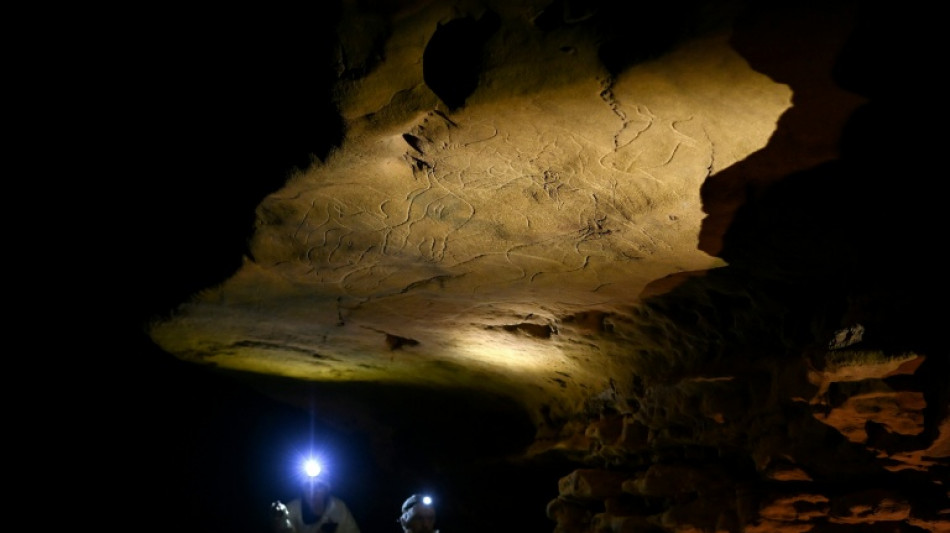
-
 Migrant's expulsion puts Washington Salvadorans on edge
Migrant's expulsion puts Washington Salvadorans on edge
-
Plan for expanded Muslim community triggers hope, fear in Texas

-
 Pakistan foreign minister due in Kabul as deportations rise
Pakistan foreign minister due in Kabul as deportations rise
-
White House touts Covid-19 'lab leak' theory on revamped site

-
 Dodgers star Ohtani skips trip to Texas to await birth of first child
Dodgers star Ohtani skips trip to Texas to await birth of first child
-
US senator says El Salvador staged 'margarita' photo op

-
 Ford 'adjusts' some exports to China due to tariffs
Ford 'adjusts' some exports to China due to tariffs
-
Thomas maintains two-shot lead at RBC Heritage

-
 US to withdraw some 1,000 troops from Syria
US to withdraw some 1,000 troops from Syria
-
Four killed after spring storms wreak havoc in the Alps
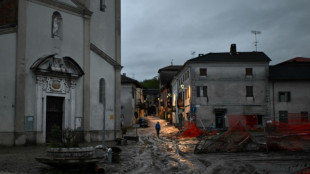
-
 Spurs' Popovich reportedly home and well after 'medical incident'
Spurs' Popovich reportedly home and well after 'medical incident'
-
Trump goes to war with the Fed

-
 Celtics chase second straight NBA title in playoff field led by Thunder, Cavs
Celtics chase second straight NBA title in playoff field led by Thunder, Cavs
-
White House site blames China for Covid-19 'lab leak'

-
 Norris edges Piastri as McLaren top Jeddah practice
Norris edges Piastri as McLaren top Jeddah practice
-
Trump warns US could ditch Ukraine talks if no progress

-
 Judge denies Sean 'Diddy' Combs push to delay trial
Judge denies Sean 'Diddy' Combs push to delay trial
-
80 killed in deadliest US attack on Yemen, Huthis say

-
 Lebanon says two killed in Israeli strikes in south
Lebanon says two killed in Israeli strikes in south
-
Trump says US will soon 'take a pass' if no Ukraine deal

-
 F1 success is 'like cooking' - Ferrari head chef Vasseur
F1 success is 'like cooking' - Ferrari head chef Vasseur
-
Cycling mulls slowing bikes to make road racing safer

-
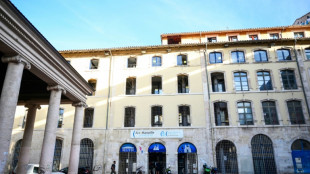 Macron invites foreign researchers to 'choose France'
Macron invites foreign researchers to 'choose France'
-
Klopp 'happy' in new job despite Real Madrid rumours: agent

-
 Alcaraz into Barcelona semis as defending champion Ruud exits
Alcaraz into Barcelona semis as defending champion Ruud exits
-
Vance meets Italy's Meloni before Easter at the Vatican
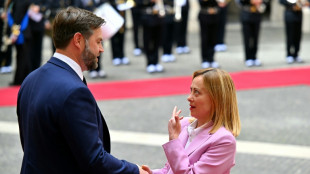
-
 Evenepoel returns with victory in Brabantse Pijl
Evenepoel returns with victory in Brabantse Pijl
-
Maresca confident he will survive Chelsea slump

-
 Mob beats to death man from persecuted Pakistan minority
Mob beats to death man from persecuted Pakistan minority
-
Lebanon says one killed in Israeli strike near Sidon

-
 Arsenal's Havertz could return for Champions League final
Arsenal's Havertz could return for Champions League final
-
US officials split on Ukraine truce prospects

-
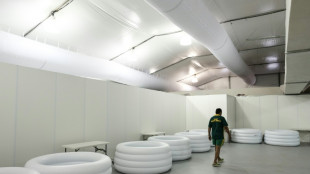 Client brain-dead after Paris cryotherapy session goes wrong
Client brain-dead after Paris cryotherapy session goes wrong
-
Flick demands answers from La Liga for 'joke' schedule

-
 'Maddest game' sums up Man Utd career for Maguire
'Maddest game' sums up Man Utd career for Maguire
-
Trial opens for students, journalists over Istanbul protests

-
 Gaza rescuers say Israeli strikes kill 24 after Hamas rejects truce proposal
Gaza rescuers say Israeli strikes kill 24 after Hamas rejects truce proposal
-
'Really stuck': Ukraine's EU accession drive stumbles

-
 'Not the time to discuss future', says Alonso amid Real Madrid links
'Not the time to discuss future', says Alonso amid Real Madrid links
-
74 killed in deadliest US attack on Yemen, Huthis say

-
 Southgate's ex-assistant Holland fired by Japan's Yokohama
Southgate's ex-assistant Holland fired by Japan's Yokohama
-
Vance meets Meloni in Rome before Easter at the Vatican
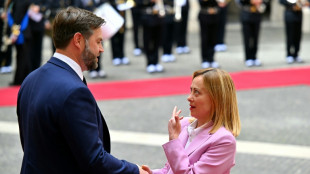
-
 Ryan Gosling to star in new 'Star Wars' film
Ryan Gosling to star in new 'Star Wars' film
-
Hamas calls for pressure to end Israel's aid block on Gaza

-
 Russia says Ukraine energy truce over, US mulls peace talks exit
Russia says Ukraine energy truce over, US mulls peace talks exit
-
58 killed in deadliest US strike on Yemen, Huthis say

-
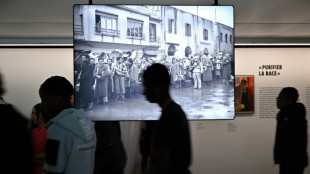 Museums rethink how the Holocaust should be shown
Museums rethink how the Holocaust should be shown
-
Three dead after deadly spring storm wreaks havoc in the Alps
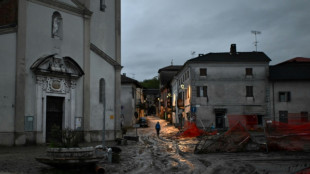
-
 No need for big changes at Liverpool, says Slot
No need for big changes at Liverpool, says Slot
-
Bloody Philippine passion play sees final performance of veteran 'Jesus'
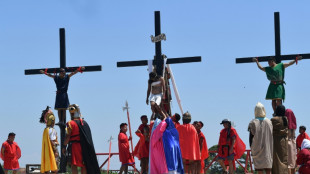

Rarely seen cave art holds prehistoric secrets in France
Deep inside a labyrinthine cave in southwestern France, ancient humans who lived around 30,000 years ago carved horses, mammoths and rhinoceros into the walls, a fabulous prehistoric menagerie that has rarely been seen -- until now.
Discovered in 2000 by an amateur cave explorer, the Grotte de Cussac in the Dordogne department holds ancient human remains, traces of long-extinct bears and stunning, fragile artworks its custodians go to great lengths to preserve.
Typically, the French authorities restrict access to the cave to researchers, who are only allowed to enter it four weeks per year.
But a team of AFP journalists was recently allowed to visit the cave for the first time, accompanied by scientists working to unravel its mysteries.
After unlocking the metal grate that blocks the entrance, the group put on white protective overclothes, head coverings and gloves, then disinfected the soles of their boots.
Authorities are anxious to avoid a repeat of the damage done to France's famed Lascaux caves by microorganisms brought in by visitors.
The Lascaux caves -- which are also located in Dordogne, though their artworks are estimated to be thousands of years younger than the Cussac carvings -- were closed to the public in 1963 to save their precious frescoes.
The Cussac cave is accessed by a narrow passage through boulders that have closed off its inner chambers for thousands of years.
Lighting the way with headlamps, visitors cross vast chambers of stalactites and stalagmites, following the same narrow path as Marc Delluc, the late amateur speleologist who discovered the cave in September 2000.
Delluc, who died in 2017, noticed a draft blowing from within the rocks, picked his way through the limestone and uncovered a path of around 100 metres (yards) leading to the engravings.
He described the "rush of adrenaline" he felt when he saw the curved figures and silhouettes carved into the rock overhead.
"I realised the privilege I'd been granted, to enter a place that had been consecrated since the dawn of time," he said.
- 'Sanctuary' -
The 1.6-kilometre (mile-long) cave has more than 1,000 carved figures, both animals and stylised feminine forms.
Scientists have dated them to between 26,000 and 35,000 years ago, the time of the ancient Gravettian culture in Europe.
"The Grotte de Cussac is exceptional for its well-preserved state. It was probably closed off very soon after it was occupied, which protected the soil and vestiges inside," said Emeline Deneuve, chief heritage conservationist for the Nouvelle-Aquitaine region's cultural affairs department.
Claw marks and signs of burrowing show it was also used by cave bears, prehistoric relatives of the brown bear.
Inside their hibernation chambers, researchers have found the remains of six human bodies, dating to the same period as the engravings.
It is the only known example of a cave used by prehistoric humans for both burials and artworks, said the site's lead archaeologist, Jacques Jaubert.
The site was a "sanctuary", not a dwelling, he said. "The group lived outside, in the open or in shelters under the rocks."
- 'Fragments of mythology' -
Jaubert thinks the cave may have been used for initiation ceremonies, "a rite of passage for adolescents to join the adult world" -- a practice often observed in primitive hunter-gatherer groups.
It would also have been seen "as a place of passage between the world of the living and the world of the dead", he said.
The carvings, which he calls "fragments of mythology", were made with flint, wood and bone.
They depict bison, ibex, geese and other animals, as well as women, often with giant heads and tiny feet.
"After testing the wall of the cave, leaving traces with his fingers, the artist carved the first animal figures, which were followed by others superimposed over them," said researcher Valerie Feruglio, who uses 3D imaging to study the artworks, seeking to decipher their stories.
- Safeguarding history -
The cave has still not been fully explored.
But authorities are extremely cautious in protecting the site, which was named a historic monument in 2002.
"We are the guardians responsible for preserving and documenting the site," said Deneuve, the conservation chief.
"We support the research carried out there, as long as it is in line with conservation and heritage requirements. Documenting the cave and digitising it in 3D is also part of our goal to bring it to the public."
In October, the Dordogne department opened a free exhibit on the cave in the town of Buisson-de-Cadouin, with reproductions of its artworks.
But authorities say there are no plans to open the cave to the public.
G.Haefliger--VB



